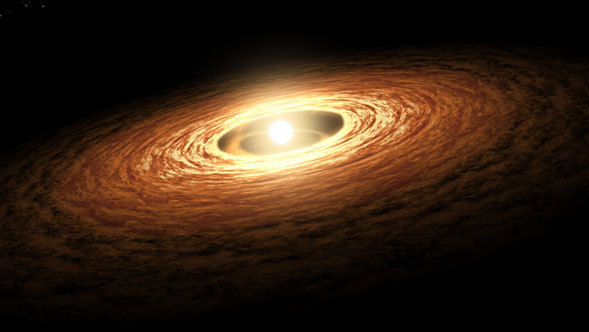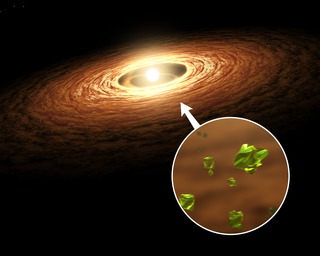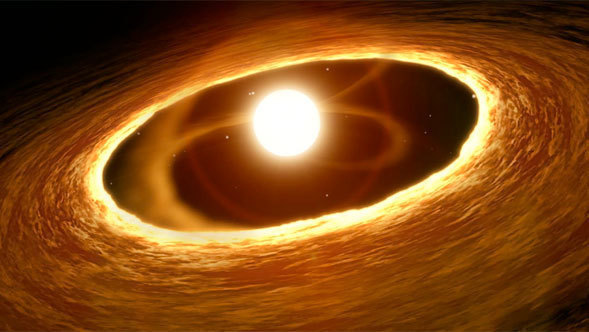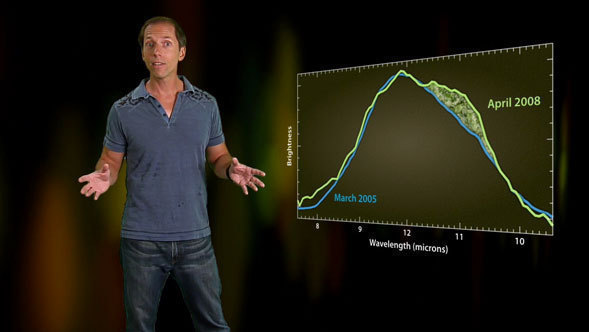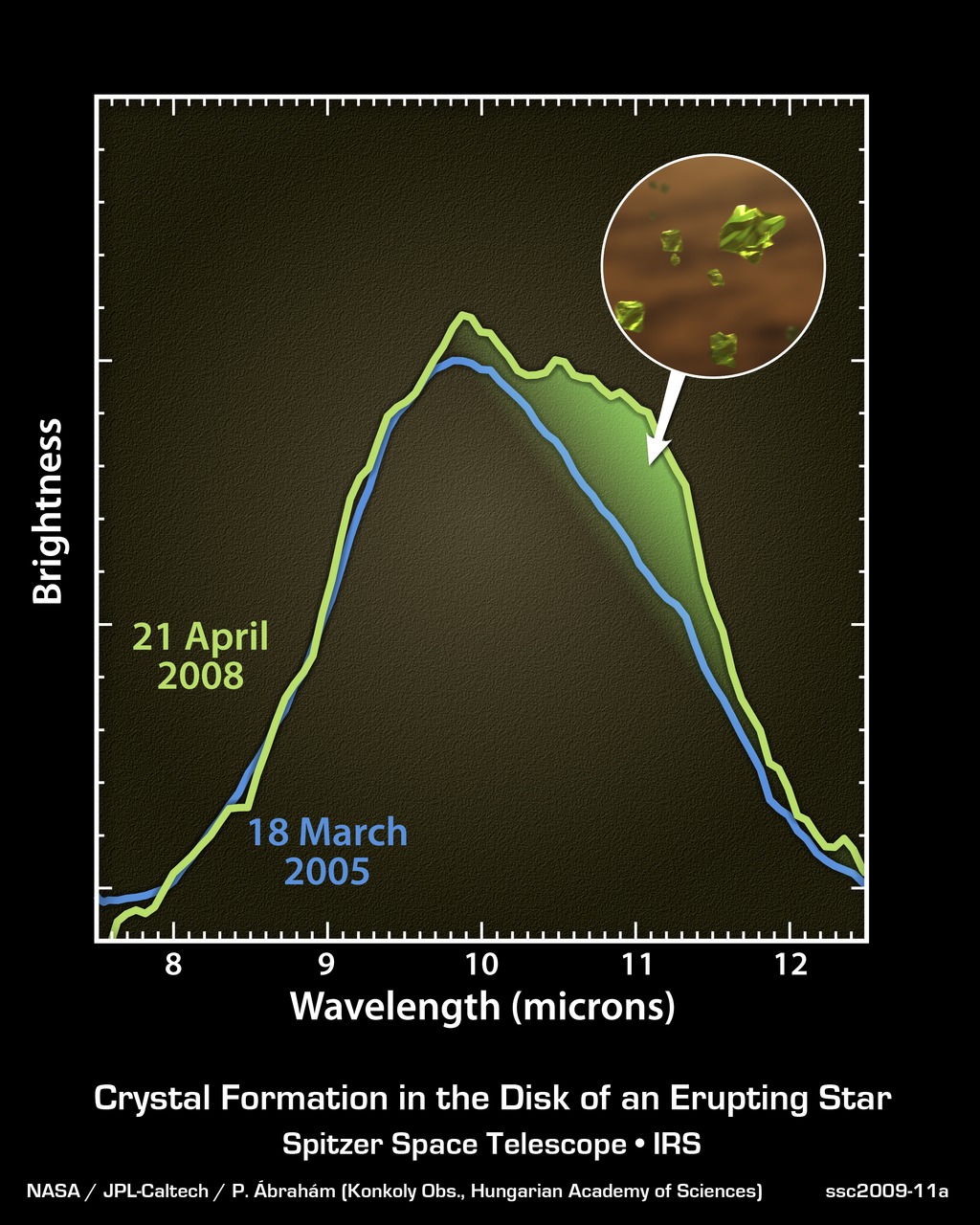
Credit: NASA/JPL-Caltech/P. brahm (Konkoly Obs., Hungarian Academy of Sciences)
Chart • May 13th, 2009 • ssc2009-11a
ssc2009-11a
Astronomers have had a rare opportunity to witness the creation of silicate crystals around a young star, as seen in this data plot from NASA's Spitzer Space Telescope.
The two lines in this chart are from Spitzer's spectrograph, which collects light and sorts it according to color, or wavelength. They show the emission from dust grains in the protoplanetary disk surrounding a young star known as EX Lupi.
The blue line dates from an early observation made on 18 March, 2005. The hump is a characteristic spectral feature typical of dust particles found throughout interstellar space.
The green line is a later observation, made on 21 April, 2008, taken while the star was experiencing an outburst, or eruption. The green area under the curve highlights a new feature that matches the spectral signature of silicate crystals (pictured in the inset).
Astronomers believe these observations indicate that the crystals were newly-forged in the warm glow of the outburst. The star brightened and heated up as material fell onto its surface from its surrounding disk, a process by which young stars increase their mass.
When the surrounding disk warms from the star's outburst, the amorphous particles of silicate melt. As they cool off, they transform into forsterite, a type of silicate crystal often found in comets in our solar system.
The two observations have been matched in scaling to highlight the new forsterite feature, observed while the star was declining in brightness. At the time of the second observation, EX Lupi was still 30 times brighter in visible light than during its quiet periods.
About the Object
- Name
- EX Lupi
- Type
- Star > Circumstellar Material > Disk > Protoplanetary
- Star > Evolutionary Stage > Young Stellar Object
Color Mapping
| Band | Wavelength | Telescope |
| Infrared | 7.5 µm | Spitzer IRS |
| Infrared | 12.5 µm | Spitzer IRS |
